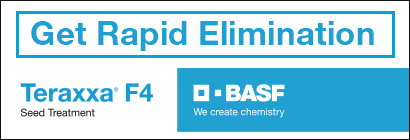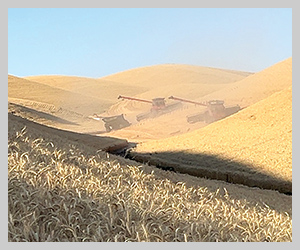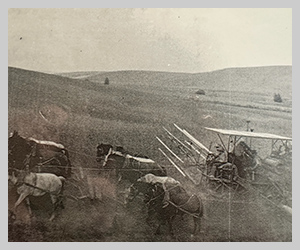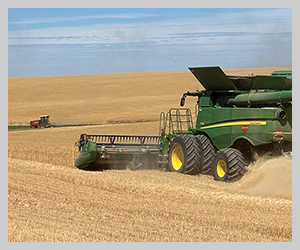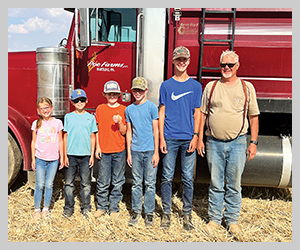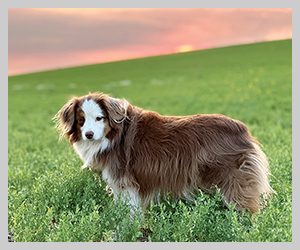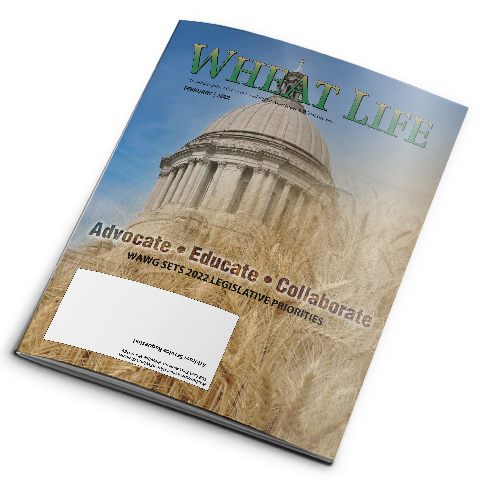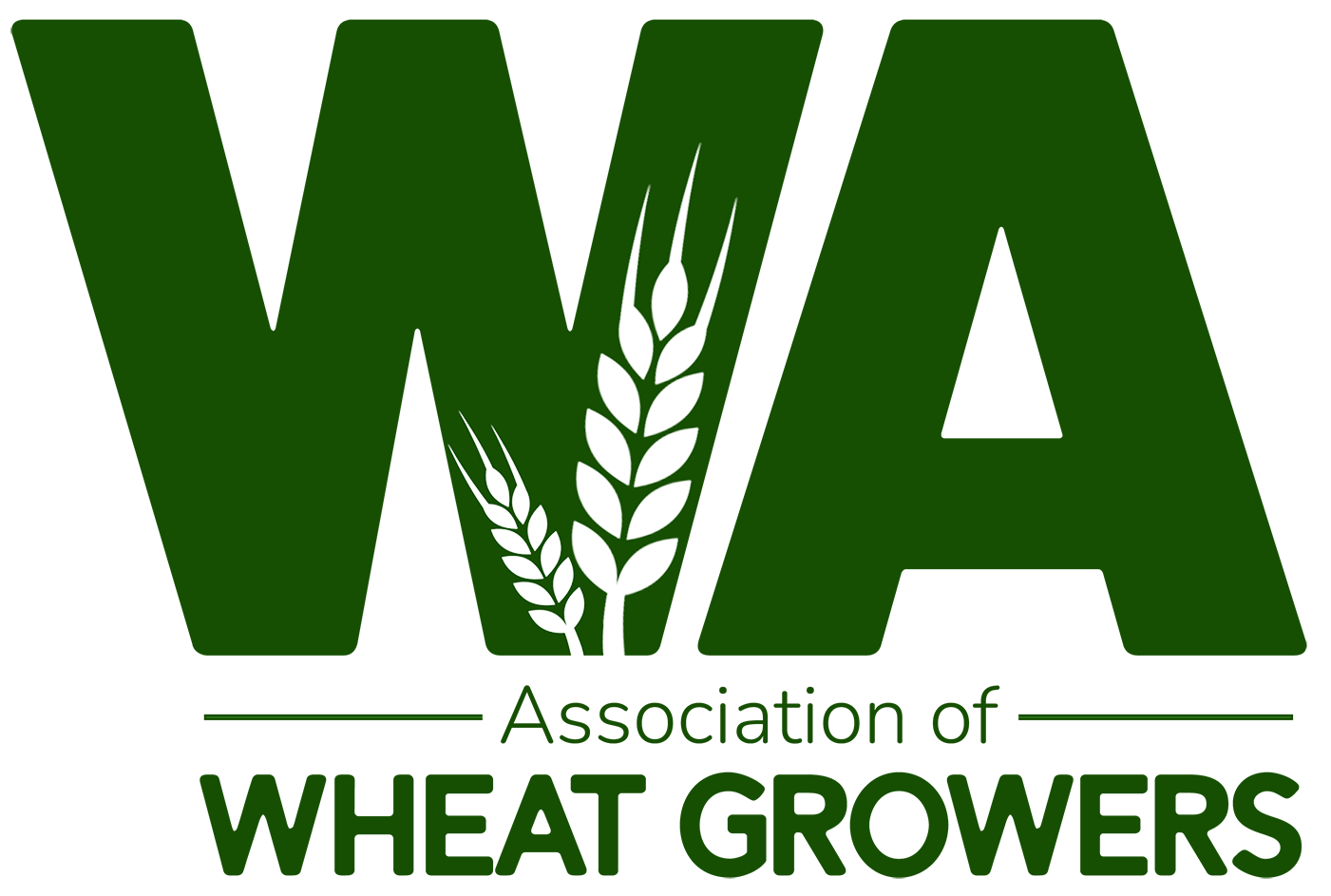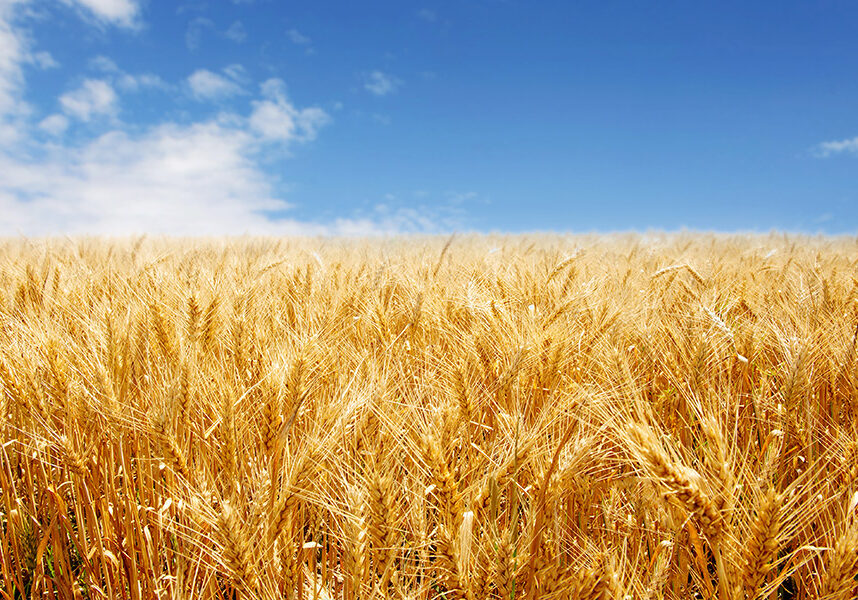
The Washington State Department of Agriculture wants to help farmers evaluate their conservation efforts and provide access to resources and technical implementation assistance through a free, voluntary, web-based program, Saving Tomorrow’s Agriculture Resources (STAR).
In the online STAR tool — startool.ag — growers answer simple, production-specific questions about their rotations, tillage, nutrient applications, and conservation practices on a field-by-field basis. Answers are converted to a score of one to five stars. Producers’ data is kept confidential and is not hosted on the state agriculture department’s website due to Washington’s privacy and public record requests rules. Information entered into the web tool is not shared.

Although the Washington STAR program is based on a national STAR program, first developed in Illinois, extensive research has gone into tailoring Washington’s program to the state’s specific crops and resource concerns, said Lauren Quackenbush, STAR program manager. Eight unique cropping systems were identified for Washington state, and the first web tool, for grains and legumes, was released in March 2025.
“We know that grains and legumes represent the largest production acreage in Washington. That was the first cropping system that we started with, but we’ve also recently released the orchards web tool as well,” Quackenbush said. “That web tool is aesthetically identical, but the questions are different. The responses are different, and the scoring is different. That’s because there are questions that you have in a perennial cropping system that are different than you would have in an annual cropping system.”
Other Washington cropping systems that will eventually have a STAR component include vineyards, annual row and root crops, hops, small berries, and hay.
Behind Washington’s STAR program is a science committee made up of researchers, agronomists, conservation district staff, and experts in specific cropping systems. Grower feedback was solicited through multiple rounds of crop-specific surveys, which gave the team an on-the-ground perspective of not just what practices were happening, but what stakeholders’ perspectives of those practices were, and what kind of on-the-ground results they had seen.
“We also wanted to get an idea of what kind of economic impediments and barriers there were to implementing these practices,” Quackenbush said. “For example, we realized that there are very few composting facilities on the east side of Washington. While we recognize that composting is a fantastic soil health practice, we also recognize that the cost of trucking tons of compost halfway across the state is not a reasonable financial ask for a lot of farmers. We took that into consideration when developing our scoring system. It has a high level of points associated with it, but you can still get five stars without using that practice.”
The team performed crop-specific, region-specific literature reviews of vetted academic and professional industry publications to evaluate the current understanding of conservation practices, and how practices actually impact conservation and soil health. They followed three specific considerations when choosing those studies: studies had to be field studies (e.g., not modeling studies), they had to have three or more replicates, and they had to include a control treatment. The results of the studies were ranked according to a practice’s effect on the resource of concern. Those studies, along with input from the science committee and the stakeholder survey responses, form the basis of the STAR scoring system.
“This is a science-based assessment,” Quackenbush said.
Beyond simply giving farmers a method of evaluating their conservation efforts, the STAR tool is also a way to provide technical assistance and implementation support. After scoring, producers are prompted to develop a conservation innovation plan and given contact information for their local conservation district, as well as the technical staff at the state Natural Resources Conservation Service (NRCS). Quackenbush said analogous NRCS practice standards are linked in the STAR tool, so growers can easily find associated agency practice standards. In addition, she hopes to be able to link the STAR tool to the Environmental Protection Agency’s new Endangered Species Act pesticide mitigation point system at some point. See below for an update on pesticide labels.
One of the impediments to implementing conservation practices is the financial cost. In Illinois, Siemer Milling Company is funding a producer reward payment program for regional growers who have implemented conservation practices that result in an improved STAR rating or a 5-STAR rating.
“We see that as a great model, and we have one grant already submitted to help jump start a similar program here in Washington,” Quackenbush said. “We’re also pursuing other types of financial incentives that may provide value outside of direct cash payments, things like reduced interest rates on farm operation loans.”
Another potential financial reward that Quackenbush is exploring is interest rate reductions on direct seed equipment loans for STAR producers. She is also talking to certification programs such as the Spokane Conservation District’s Farmed Smart/BioFarming program and the Salmon Safe certification program.
“I want to encourage people to reach out with any questions or if they have any interest in partnering with us. I think it’s really important that we continue to engage with stakeholders and farmers and continue to improve the program to best meet their needs,” Quackenbush said. “I have a history in production agriculture. I owned a farm for five years. I worked in large scale production agriculture for a number of years, and one of my biggest issues was securing funding for new practices. I’m trying to approach the program development with the mind of somebody who understands the challenges of being a modern farmer.”
For more information about the STAR program, visit the program’s website at washingtonsoilhealthinitiative.com/star/.
Pesticide label changes
The Environmental Protection Agency (EPA) is making changes to the rules farmers and pesticide applicators must follow. Many of these changes will include conservation practices to lower the chance that pesticides will enter the environment through drift or runoff.
If the EPA thinks that the same protections are needed everywhere in the U.S., they will be listed on the pesticide label and utilize the drift and runoff mitigation menus. In cases where the protections are only needed in specific areas, they will be listed on Endangered Species Protection Bulletins on the Bulletins Live! Two website.
Why is this happening?
Since 2001, the EPA has been sued repeatedly for not meeting Endangered Species Act requirements when they review pesticide registrations. Now they must follow a court-ordered schedule to complete Endangered Species Act reviews. They are also required to make sure no endangered species are harmed by pesticides before reviews can happen.
What will change on pesticide labels?
Some pesticide labels will have more requirements to follow. They will still have requirements about application rates, number of applications, and weather, but they may also have requirements about tillage, cover crops, filter strips, buffers, or other practices. The level of requirements will be assigned to each pesticide based on a nine-point menu system for runoff, and/or a buffer reduction menu system for drift.
Where do I find the mitigation menus?
Find them at epa.gov/pesticides/mitigation-menu.
How do I find and use Bulletins Live! Two?
- Download Endangered Species Protection Bulletins online at
epa.gov/endangeredspecies/bulletins-live-two-view-bulletins. - Call 1-844-447-3813.
- Email ESPP@epa.gov.
Being part of a conservation program may meet the requirements.
In a recently published Final Insecticide Strategy, the EPA outlined the potential for some conservation programs to qualify as meeting all runoff mitigation requirements. The first of these approved conservation programs is the Natural Resources Conservation Services Environmental Quality Incentives Program. The Washington State Department of Agriculture is pursuing the opportunity for the STAR program, with their collaboration, to achieve qualification as a conservation program that meets or exceeds all of the runoff mitigation requirements.
Compiled by Abbey Nickelson, natural resources scientist, Washington State Department of Agriculture



